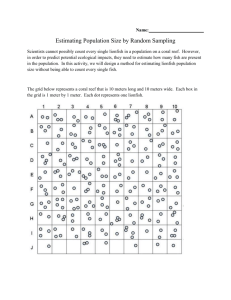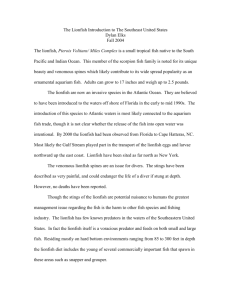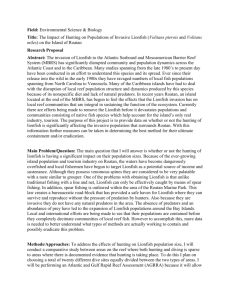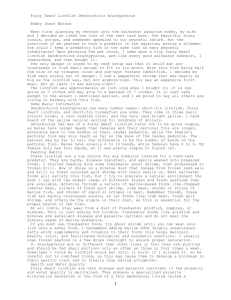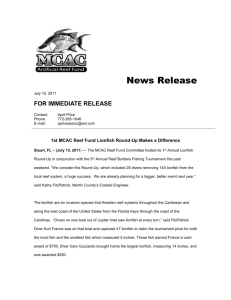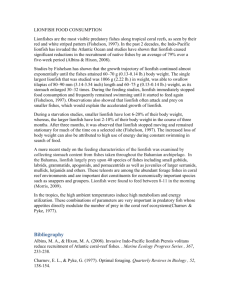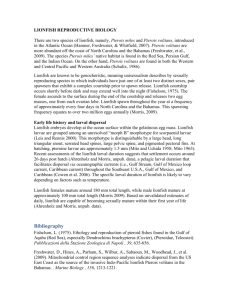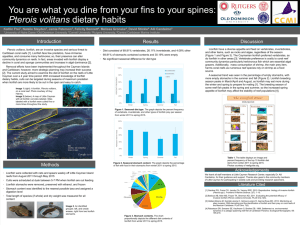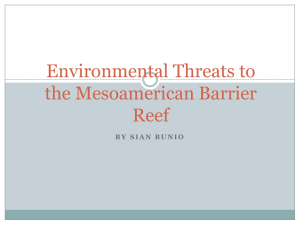Threats to the Mesoamerican Barrier Reef
advertisement
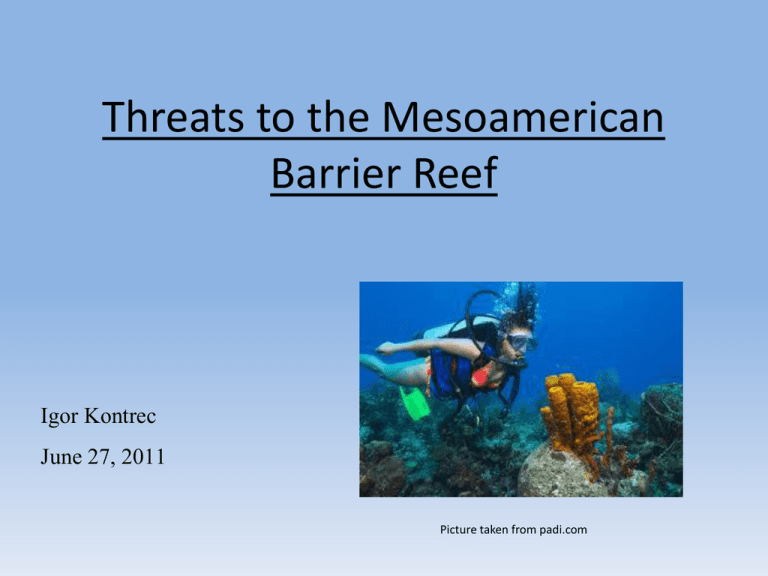
Threats to the Mesoamerican Barrier Reef Igor Kontrec June 27, 2011 Picture taken from padi.com What is causing the destruction of the reef? 2 major threats include: o Climate change o Introduced species Climate Change Coral bleaching • Is a sign that a coral is in stress and is on the verge of death • Caused by the lack of photosynthetic zooxanthella, which gives corals their colour(Buccheim 1998). They live in the cells of corals and provide oxygen while using the waste material and carbon dioxide the coral Partially bleached coral. Taken from releases. globalwarmingart.com • The paling and depletion of zooxanthellae can be caused by a change in water temperature, rising water levels, and severe storms. Coral Bleaching locations worldwide. Large concentration in Caribbean. Graph taken from marinebiology.org Climate Change Cont’d Rise in Temperature • Optimal temperature for corals to thrive is between 25 and 30 °C. • A drop of 3-5 °C for 5-10 days can cause bleaching but it is more frequent for bleaching to occur during summer months. A rise in temperature of only 1-2 °C for 5-10 weeks will cause evident bleaching (Buccheim 1998). • Water holds less oxygen at higher temperatures(Buccheim 1998). • Due to the lack of oxygen, corals are deprived of energy and begin to stress and bleach Climate Change Rise in Sea Levels • Corals thrive in relatively shallow areas reaching a maximum depth of 50m. • When water levels rise, sunlight does not penetrate as deep therefore does not reach corals in vulnerable places. • The rise in sea levels are caused by severe storms and large amounts of run-off water. Dead coral from Hawaii. Photo taken by myself. Climate Change Severe Storms • Storms in the Mesoamerica area are becoming more frequent and unpredictable(worldwildlife.org). • The large amounts of freshwater being deposited are changing the salinity of the water. For corals, the optimal salinity is 34 -37 parts out of 1000(oceanworld.edu). When severe storms occur, the habitat of the corals is slightly diluted. • Usually occurs in shallow areas. • If storms are more frequent and more severe, it can lead to higher amounts of coral death. Introduced Species Tilapia • Originally in fish farms but managed to expand locations. • Over the past 25 years they have been found in streams, rivers, lagoons, and costal waters. • Eating native fish species. • Upsetting to the native Mayangna people. Tilapia farm in Belize. Photo taken from fis.com Introduced Species Lionfish • Originally from the Indo-Pacific area but have been introduced to the Caribbean and Atlantic. • First sighting in Belize was in 2008 and are now seen daily. • Lionfish are successful in this habitat because they have very active reproductive systems; reproducing every four days spawning 30,000 eggs every time. The eggs are buoyant which is very unusual. • Lionfish have venomous spikes. • Eats fish half its size in one gulp and has been observed to eat 20 fish in 30 minutes (ambergriscaye.com). Lionfish cont’d • Lionfish have no predators in the Caribbean, except other lionfish. They are cannibalistic. • Experiments involving moray eels have been unsuccessful. Only a shark has eaten the lionfish but it was very difficult to do so. • By eating all other fish it is ruining the fishing industry and killing the diversity of the reef. This will also affect tourism. • Efforts to stop the lionfish have been through organizations such as the “Belize Lionfish Project”. Lionfish. Animalsspecies.com • The “Belize Lionfish Project” is encouraging fisherman to catch as many lionfish as possible seeing as it will increase their income. • Raising awareness to scuba divers and marine guides. • Government permits issued to divers to use lionfish as culling devices. • Lionfish tournaments are held. • Restaurants are persistently told to serve Lionfish because it is edible. (ecomarbelize.org) • Video on the “Belize Lionfish Project” cooking Lionfish http://www.youtube.com/watch?v=YfAxeKv6TYQ&feature=bf _next&list=WLB4D8B8E1F0712C9F&index=2 Conclusion • Climate change has changed water depths and salinity due to storms. It has also changed water temperatures of the areas. All these factors have caused coral bleaching and ultimately the death of corals. • Introduced species have devastated native fish populations and ruined food webs in the worlds second largest barrier reef. The End

